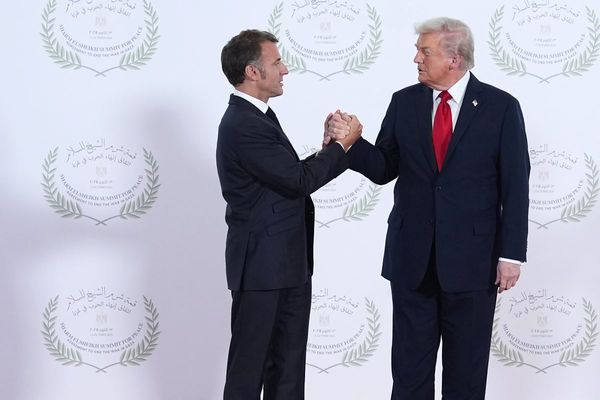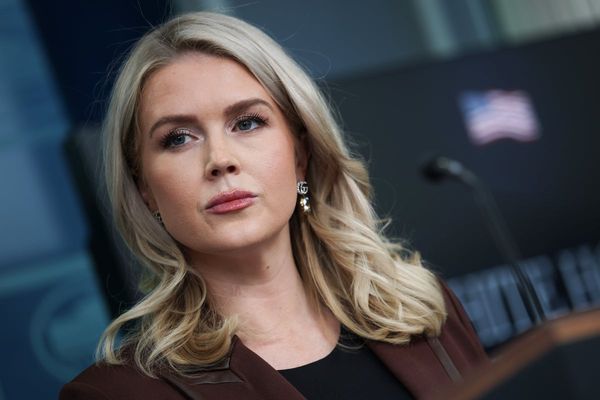
Australia will put nuclear safety “above all else” as it begins the “generational challenge” of building and operating nuclear-powered submarines under the Aukus pact, the government’s top adviser has said.
V Adm Jonathan Mead has moved to allay concerns – both at home and across the region – about nuclear safety as Australia, the US and the UK prepare to announce their detailed plans within days.
The head of the Australian government’s nuclear-powered submarine taskforce has also insisted that the likely presence of American and British personnel on Australian boats would not inhibit Australian command and control.
In an interview with Guardian Australia, Mead said there were likely to be more Australians onboard British and American nuclear-powered submarines as part of the training process. He said as many as 40 Australians may potentially be onboard a US submarine at any one time.
The US president, Joe Biden, is due to welcome the Australian prime minister, Anthony Albanese, and the British PM, Rishi Sunak, to the US for a joint announcement early next week about the practicalities of Australia acquiring at least eight nuclear-powered submarines.
Mead, who leads a taskforce of more than 350 Australian officials who have been working on the plans, said this would be “a generational challenge for Australia and will probably redefine Australia’s strategic personality”.
But he sought to reassure partners in south-east Asia and the Pacific about Australia’s intentions. “I can give them a commitment that we will hold the standards of safety above all else,” Mead said on Wednesday.

“Look at the track record of US and UK nuclear submarines previously, look at Australia’s own track record in the way we manage our research reactor at Lucas Heights, and the way that we have managed visiting nuclear-powered ships and submarines over the past 60 years.”
Mead described nuclear safety as “the No 1 consideration as we build, operate, maintain and regulate the nuclear powered submarines”.
This would include safety of the submarine crew, safety of the community, and environmental protection.
He said Australia had received “a very clear message from the US and the UK that safety is paramount” but added: “I think the Australian people would absolutely expect that, so we’re going to make sure that we set a gold standard when it comes to safety.”
‘Welded, shielded and sealed’ for 33 years
Some nuclear experts have argued the Aukus arrangement depends on “a glaring and worrying loophole” in safeguards that could be exploited by others.
The Nuclear Non-Proliferation Treaty (NPT) does not ban non-nuclear weapon countries such as Australia from having nuclear-powered naval vessels.
The Chinese government has also sought to sow doubt about Aukus, arguing the deal would have “a grave nuclear proliferation risk and violates the object and purpose of the NPT”.
But Mead said each nuclear reactor would “come to us welded, shielded and sealed” and Australia was in continuing dialogue with the International Atomic Energy Agency.
He said they were making “excellent progress” on an inspection and verification regime, while acknowledging the need “to protect very sensitive technology of the US and UK”.
“Nuclear-powered submarines are not prohibited under the NPT,” Mead said.
“Yes, the reactors will be with highly enriched uranium. But once again, they are welded, shielded and sealed for the life of the reactor. That’s 33 years.
“We will implement the most stringent of security protocols to make sure that those reactors are not opened for the life of the submarine.”
Sovereign control
Mead was tight-lipped about the design of the submarine, the timeframes and the cost – all of which will be announced soon.
But he again defended the plans against concerns raised by former prime ministers Malcolm Turnbull and Paul Keating over their potential impact on Australian sovereignty.

“When we take our own sovereign control, we will clearly have some US and UK sailors there – and they may be there to provide technical advice on the reactor, or they may be upfront working with us in the combat system,” Mead said.
“We welcome that technical advice, we welcome subject matter expertise. And I think that we will continue to have US and UK people in our submarines, as we will have our own people onboard their submarines.”
But Mead said such arrangements would not inhibit Australian command and control.
“It doesn’t matter who is onboard. If that is an Australian flagged submarine with an Australian commanding officer, there is absolutely no ambiguity when it comes to sovereign control,” he said.
Asked what would happen if that technical advice was withdrawn, Mead said Australia was determined to “develop a sovereign ability to build a nuclear-powered submarine, operate a nuclear-powered submarine, maintain a nuclear-powered submarine and regulate a nuclear-powered submarine”.
“So there’s an expectation by our partners, and I think Australians would have an expectation, that we must be able to do this ourselves,” Mead said.
“But yes, we will have assistance, something we have assistance with many of our major programs. The US and the UK will assist us and as we develop more and more understanding of the technology, then we would be probably have less of those people in Australia.”
Mead said the looming announcement would show that the plans were “really a trilateral partnership” with the US and the UK, rather than a binary choice.
He said his taskforce was working closely with the South Australian government and unions to develop a supply chain and vendor base in Australia that could feed into US and UK programs.
On Wednesday the British high commissioner to Australia, Vicki Treadell, rebuked the Australian opposition leader, Peter Dutton, for saying the government should pursue US Virginia class submarines over a British alternative.
Treadell said she had spoken with Dutton and told him he was “commenting on an outcome he doesn’t yet know”. She told the National Press Club: “I was simply pointing out that I did not think such expressions were helpful on what is a genuine trilateral partnership started under his government.”







